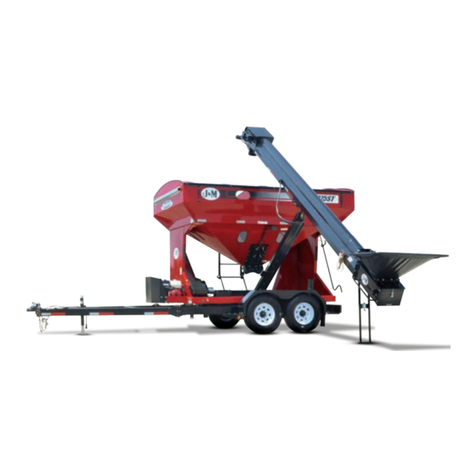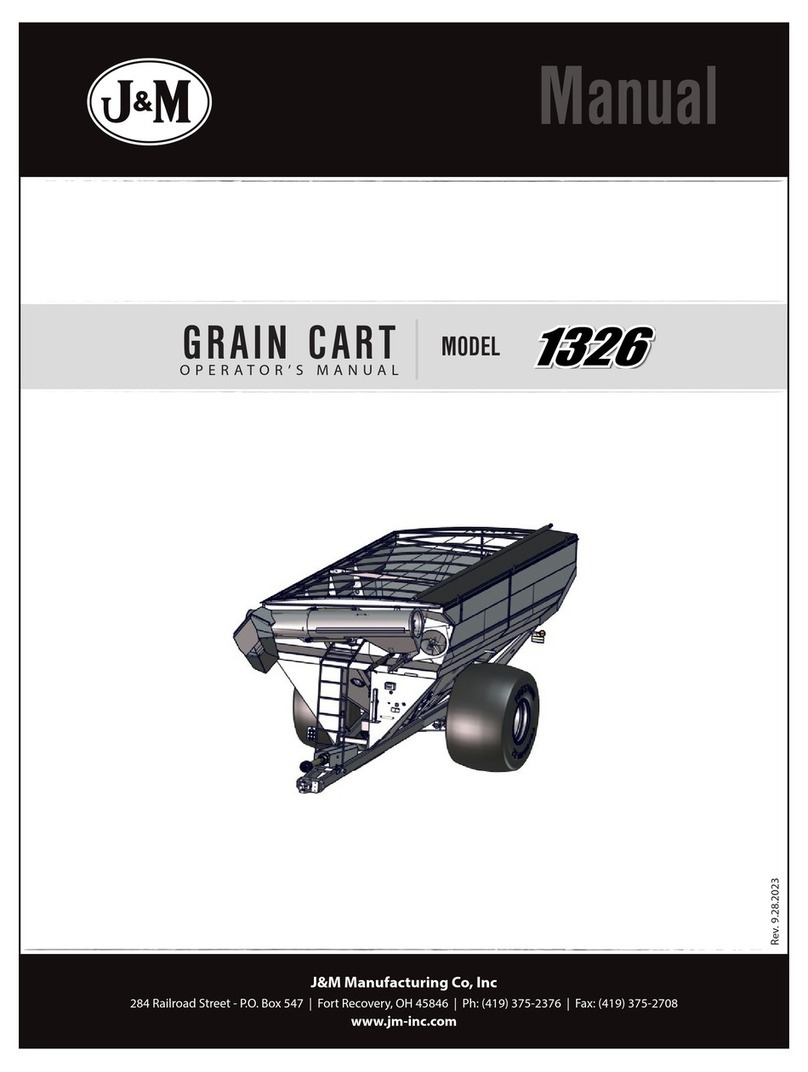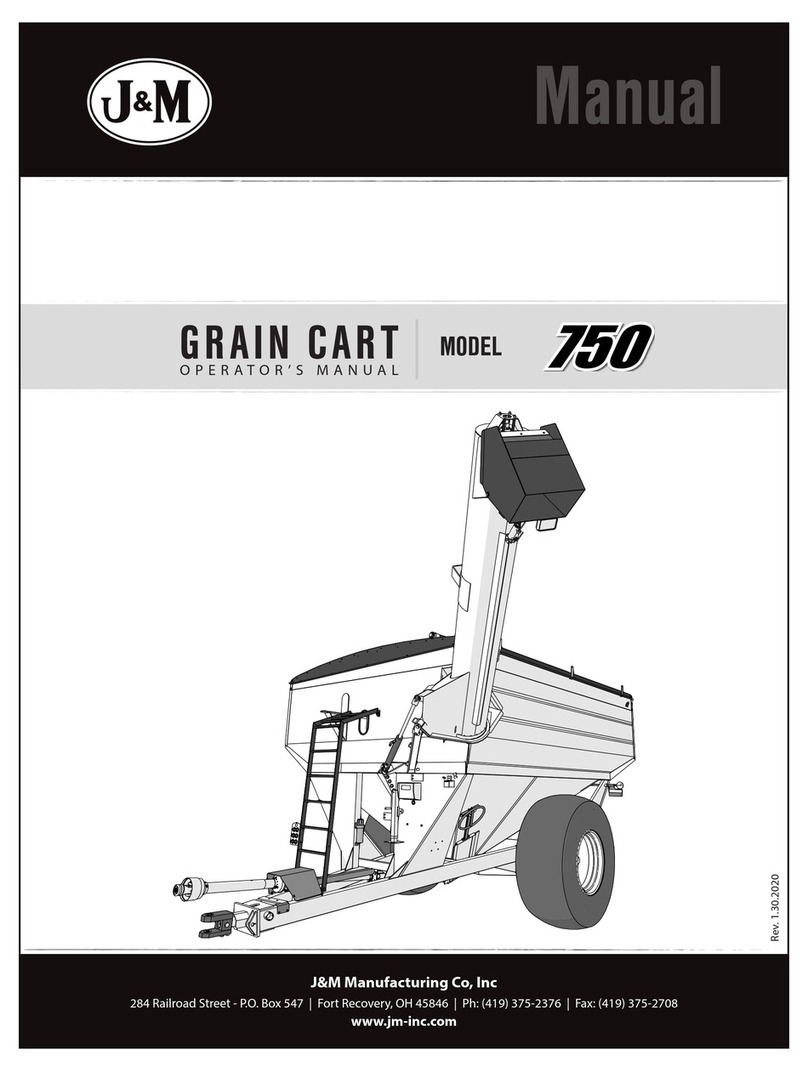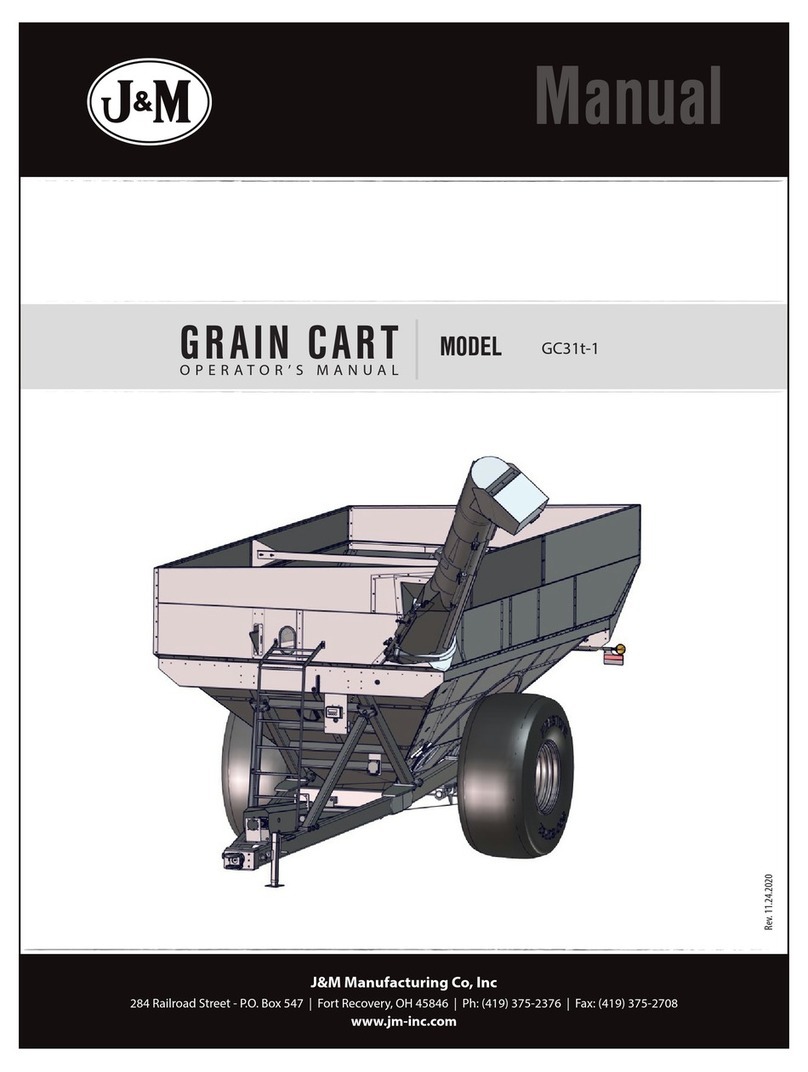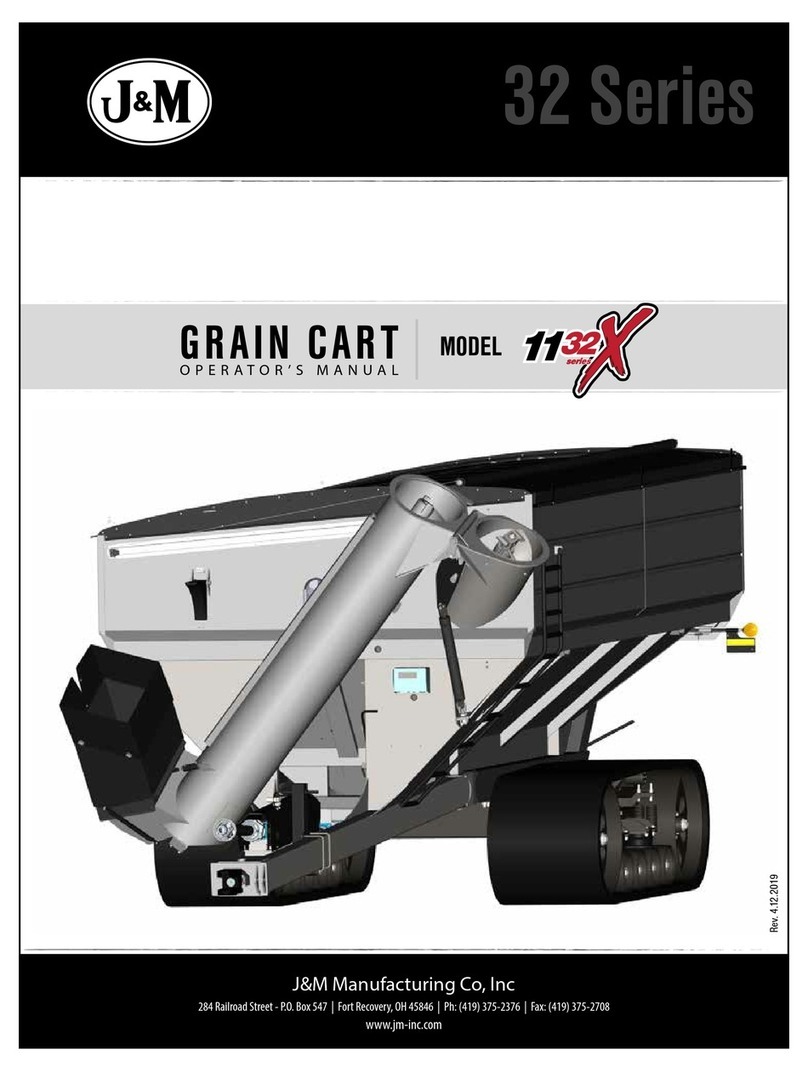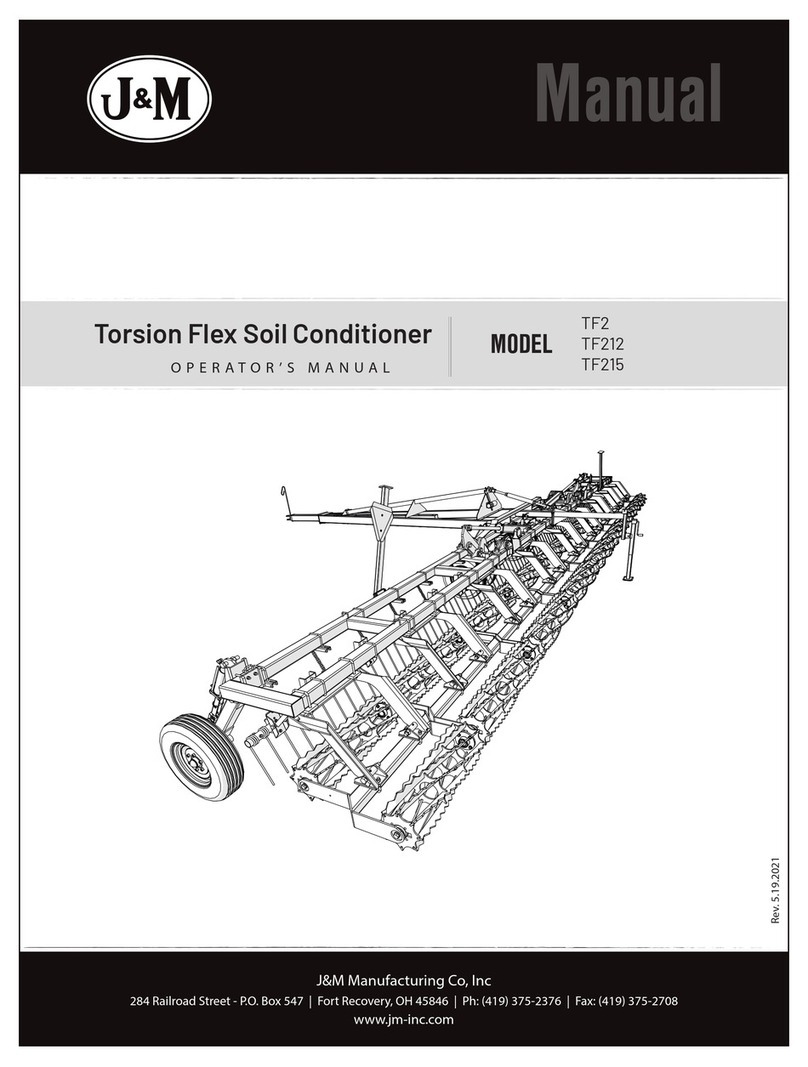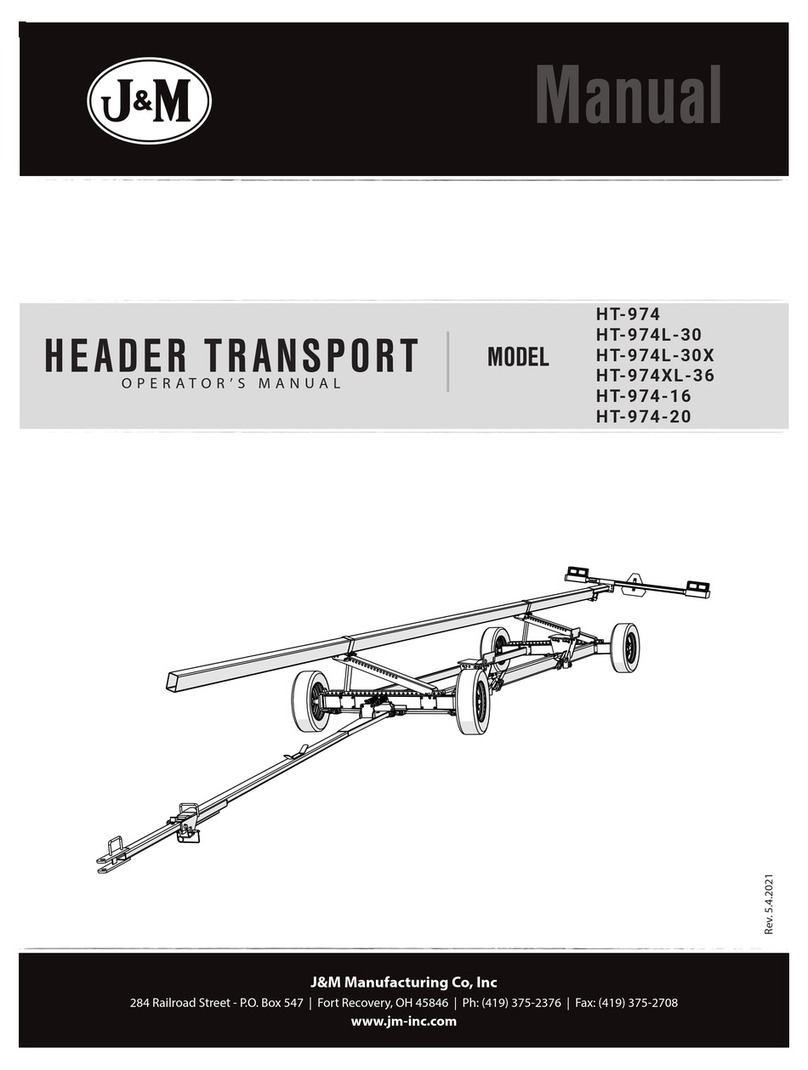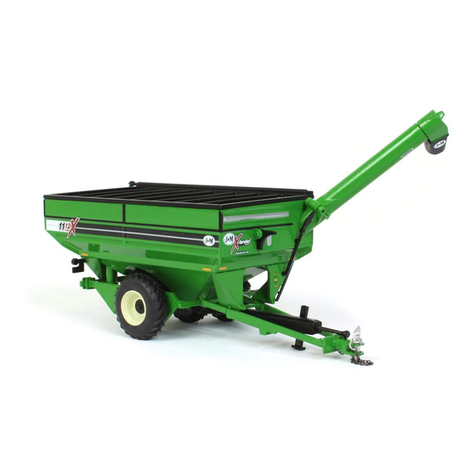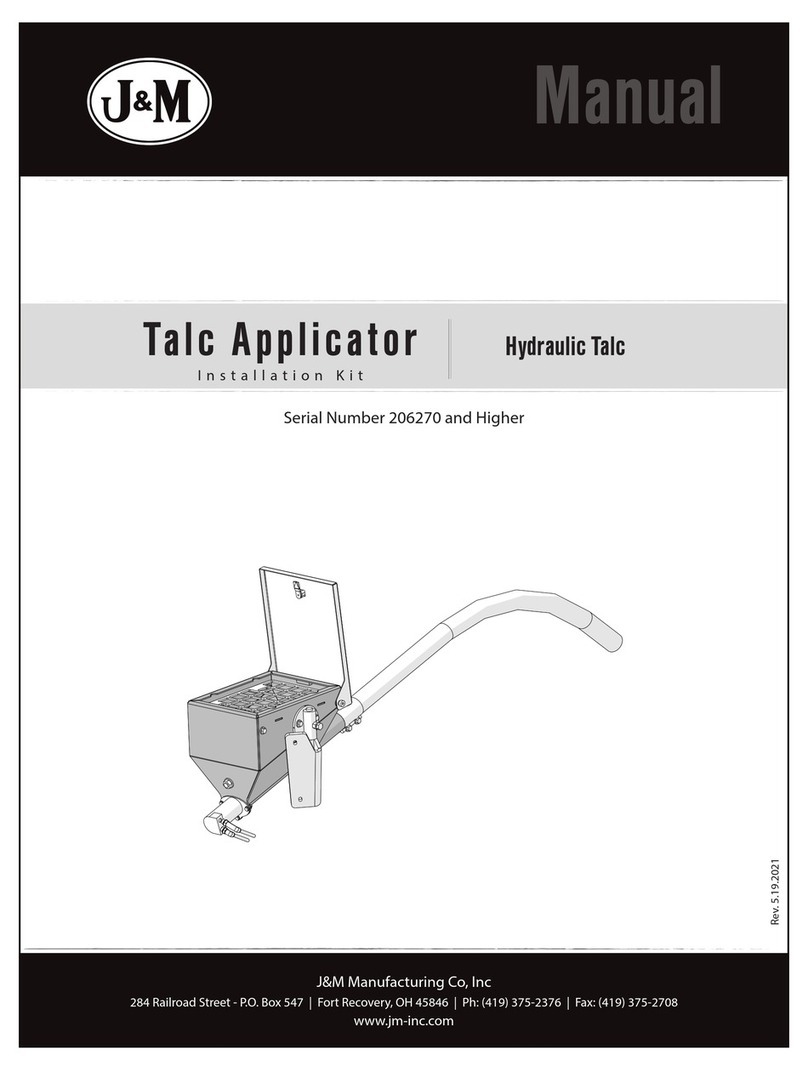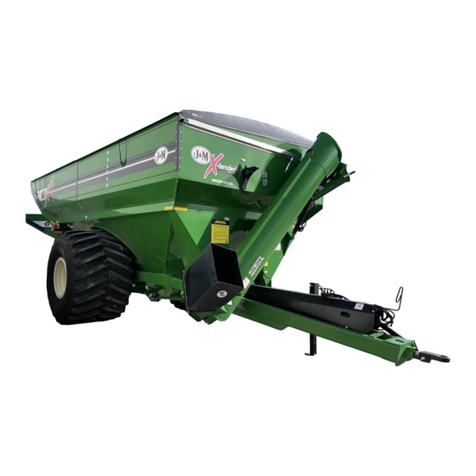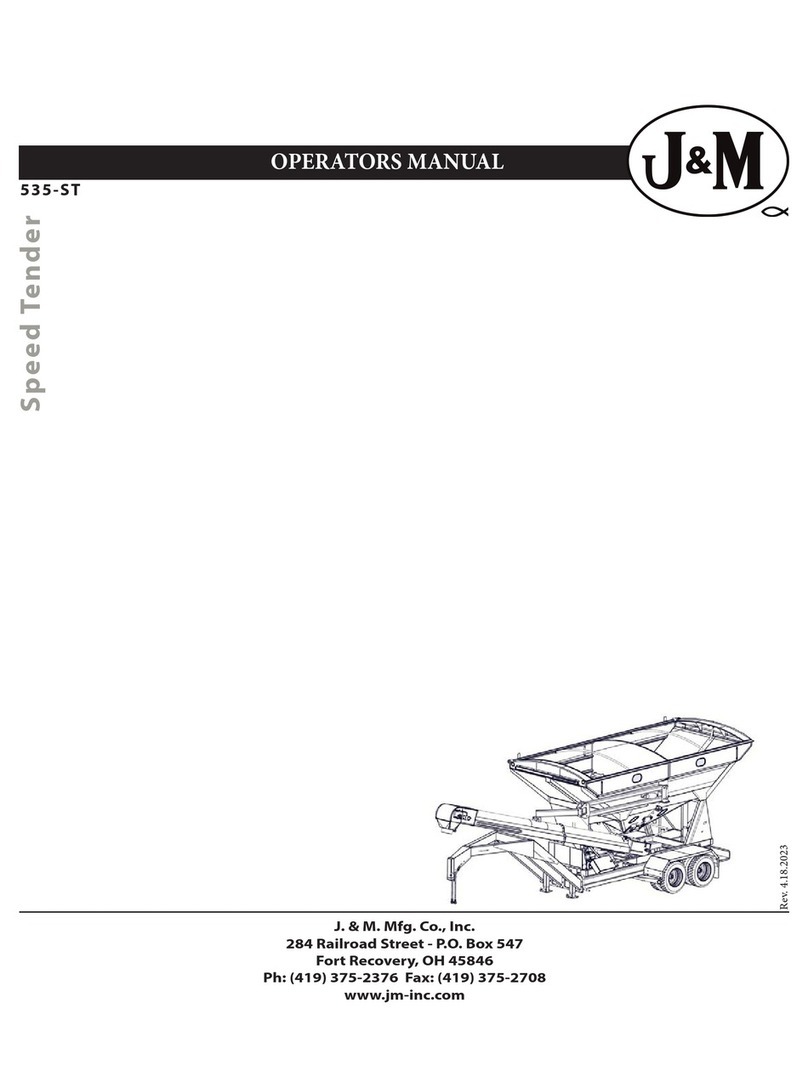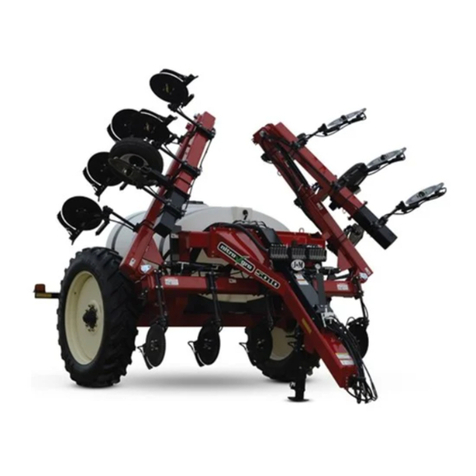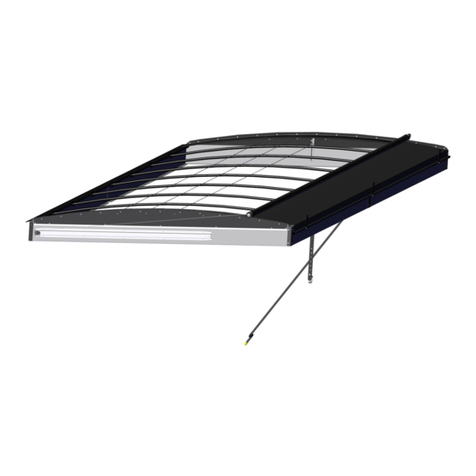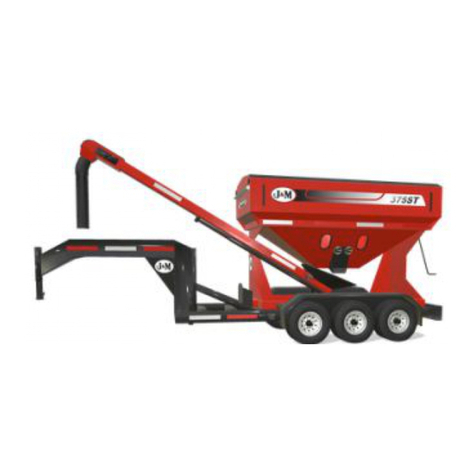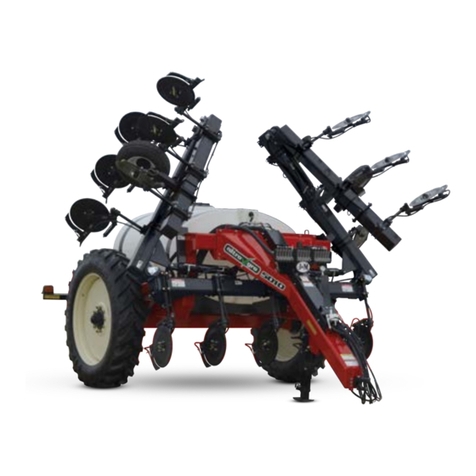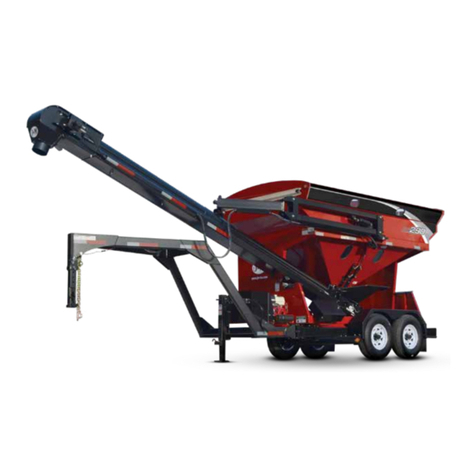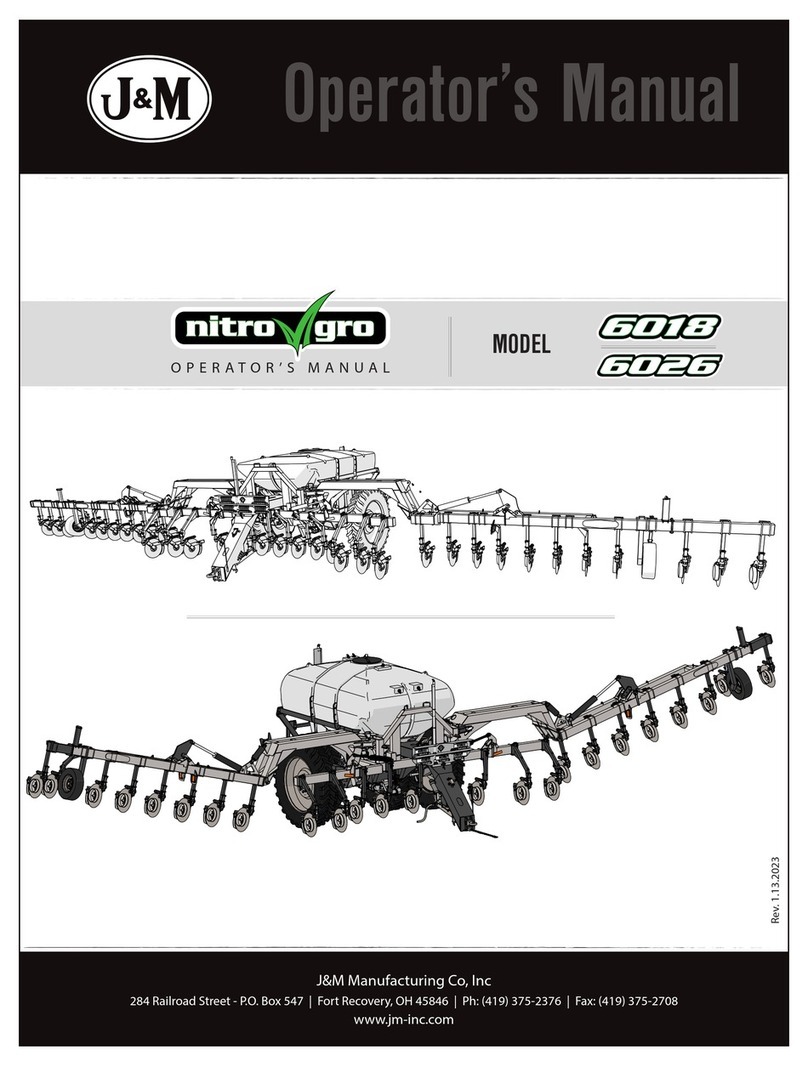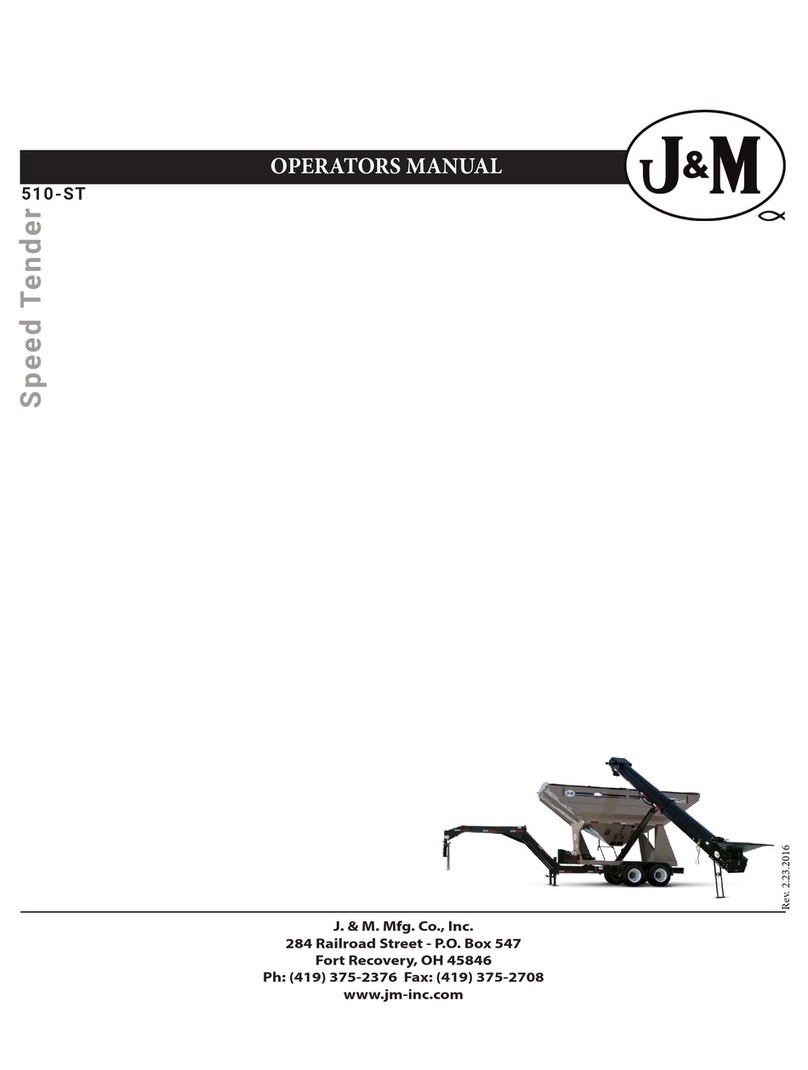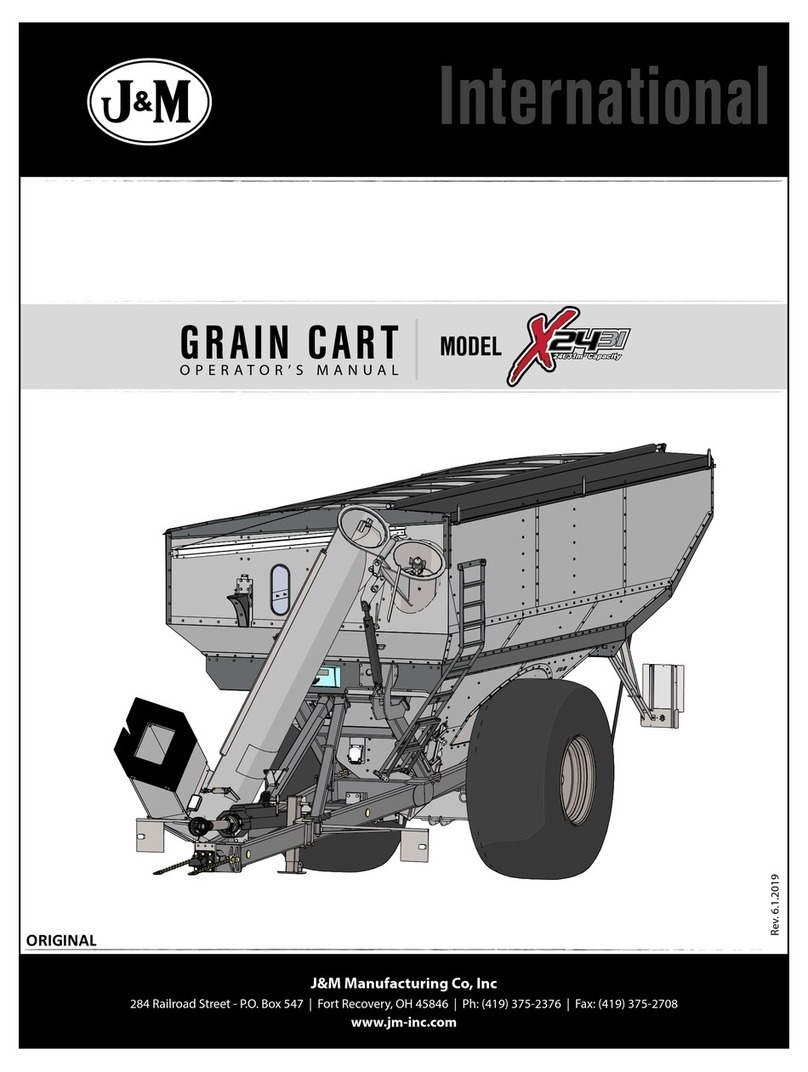
2
G I
TO THE DEALER:
Read manual instructions and safety rules. Make sure all items on the Dealer’s Pre-Delivery and Delivery Check
Lists in the Operator’s Manual are completed before releasing equipment to the owner.
The dealer must complete the Warranty Registration Card attached to the front inside cover of this manual and re-
turn to J. & M. Mfg. Co., Inc. at the address indicated on the card. Warranty claims will be denied if the Warranty
Registration Card has not been completed and returned.
EXPRESS WARRANTY:
J. & M. Mfg. Co. Inc. warrants against defects in construction or materials for a period of ONE year. We reserve
the right to inspect and decide whether material or construction was faulty or whether abuse or accident voids our
guarantee.
Warranty service must be performed by a dealer or service center authorized by J. & M. Mfg. Co. Inc. to sell and/
or service the type of product involved, which will use only new or re-manufactured parts or components fur-
nished by J. & M. Mfg. Co. Inc. Warranty service will be performed without charge to the purchaser for parts
or labor based on the Warranty Labor Times schedule. Under no circumstance will allowable labor times extend
beyond the maximum hours indicated in the Warranty Labor Times schedule for each warranty procedure. The
purchaser will be responsible, however, for any service call and/or transportation of the product to and from the
dealer or service center’s place of business, for any premium charged for overtime labor requested by the purchas-
er, and for any service and/or maintenance not directly related to any defect covered under the warranty. Costs
associated with equipment rental, product down time, or product disposal are not warrantable and will not be
accepted under any circumstance.
Each warranty term begins on the date of product delivery to the purchaser. Under no circumstance will warranty
be approved unless (i) the product warranty registration card has been properly completed and submitted to the
equipment manufacturer, and (ii) a warranty authorization number has been issued by the equipment manufactur-
er. This Warranty is eective only if the warranty registration card is returned within 30 days of purchase.
This warranty does not cover a component which fails, malfunctions or is damaged as a result of (i) improper
modication or repair, (ii) accident, abuse or improper use, (iii) improper or insucient maintenance, or (iv) nor-
mal wear or tear. This warranty does not cover products that are previously owned and extends solely to the origi-
nal purchaser of the product. Should the original purchaser sell or otherwise transfer this product to a third party,
this Warranty does not transfer to the third party purchaser in any way. J. & M. Mfg. Co. Inc. makes no warranty,
express or implied, with respect to tires or other parts or accessories not manufactured by J. & M. Mfg. Co. Inc.
Warranties for these items, if any, are provided separately by their respective manufacturers.
THIS WARRANTY IS EXPRESSLY IN LIEU OFALL OTHER WARRANTIES OR CONDITIONS, EX-
PRESS, IMPLIED OR STATUTORY, INCLUDING ANY IMPLIED WARRANTY OF MERCHANTABIL-
ITY OR FITNESS FOR PARTICULAR PURPOSE.
In no event shall J. & M. Mfg. Co. Inc. be liable for special, direct, incidental or consequential damages of any
kind. The exclusive remedy under this Warranty shall be repair or replacement of the defective component at J. &
M. Mfg. Co. Inc.’s option. This is the entire agreement between J. & M. Mfg. Co. Inc. and the Owner about war-
ranty and no J. & M. Mfg. Co. Inc. employee or dealer is authorized to make any additional warranty on behalf of
J. & M. Mfg. Co. Inc.







